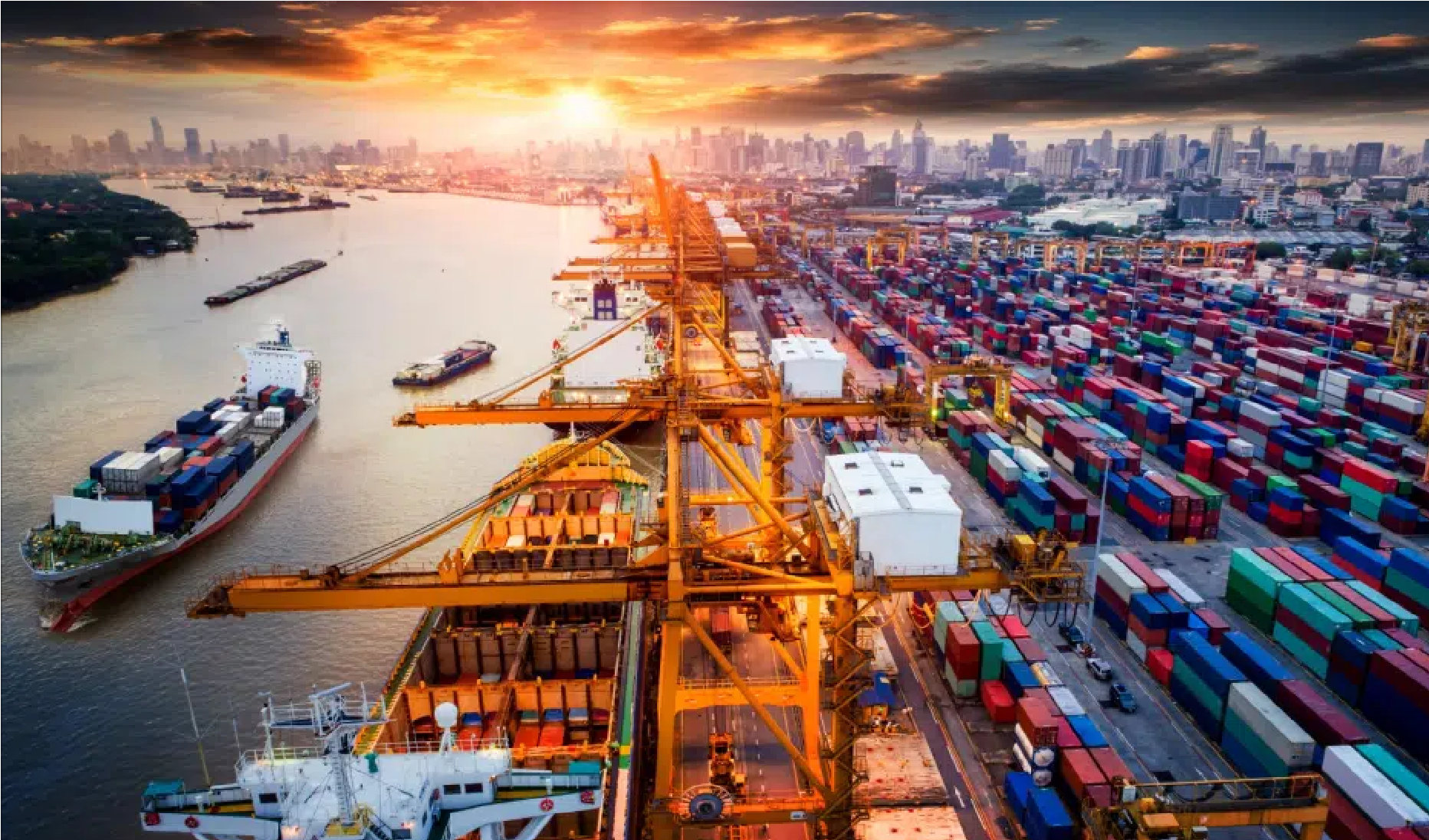The Complex Case of Transshipments in Container Ship Tracking

“Ninety (90)% of world trade is transported by sea,” according to Maersk, and this ocean leg of the supply chain is often complicated because, “nearly 5,000 container vessels transport over 34 million containers (TEU) around the world, every year.” With that many container vessels and containers in the global container fleet, there is a high possibility of supply chain disruptions. Container ship tracking and ocean freight visibility have never been more crucial for managing disruptions and challenges.
Container ship tracking, also known as cargo ship tracking, is important for planning ahead and knowing early in the process when your container/cargo will arrive. But, it’s even more complex when transshipment is required, making the prediction of vessel and carrier-estimated time of arrival (ETAs) for shipments that include a transshipment stop even more difficult.
Transshipment – a Challenge Affecting the Supply Chain
One of the major supply chain challenges is transshipment. This is when cargo or a container is transported from one vessel to another while in transit to its final port of discharge (POD). In a classic transshipment scenario, container X will leave the original port of loading (POL) on vessel A, travel to a transshipment port, be discharged from vessel A, and be loaded onto vessel B, which will transport it to the final POD. During more complicated scenarios, there could even be one or two more intermediate ports. When transshipments take place, there is a high risk that there may be delays due to port congestion or other external factors. Unfortunately, this method is a necessity for most of the major economies. This is why some ports in Europe are considered transshipment hubs, meaning at least 25% of the containers that pass through their terminals are part of a transshipped voyage. Southern Europe has some ports that have as many as 75% of their yearly container throughput that are part of a transshipment, such as Valencia in Spain, Gioia Tauro in Italy and Algeciras Bay in Gibraltar. But in terms of volume, Rotterdam in the Netherlands, Antwerp in Belgium and Hamburg in Germany are some of the major hubs connecting the far East to northern Europe.
Transshipments take place when there is no direct link (or cost-efficient link) between the POL and POD and the intended POD is unavailable for various reasons, or if it can’t accommodate large vessels. Even though transshipment may reduce costs, it will usually lead to longer transport times. There’s also the risk of damage or loss of cargo due to unloading and loading the containers (sometimes multiple times) at the transshipment hub. Both cargo ship tracking and container tracking are important for assessing the container ETA to its final POD.
When a container journey is composed of multiple transhipments, it means more stops at ports. One important factor affecting delays is the overall efficiency (turnover time) of these ports, as well as how long port call durations are – specifically for feeder vessels.
Port Efficiency – Understanding Turnover Times
The quicker the turnover time at ports (and transshipment hubs), the more efficient the port is, but when turnover time is slower, it means the port is less efficient. Container ship tracking helps facilitate the accurate measurement of port efficiency, which is calculated by measuring port call durations. This is the exact time the vessel arrived at and departed from the port, and from this, the average turnover time can be derived. Normalizing the numbers and measuring the efficiency per 1,000 TEUs enables easier analysis of the data and more accurate insights. Port efficiency and turnover time can be used to predict how long your container’s journey will take from leaving its POL and arriving at its final POD.
It’s important to understand turnover times not only for your vessel, but also for all the vessels that are in line before you. To understand how many vessels are in front of yours, you need visibility over the entire fleet of container vessels and know their container shipping status.
Visibility of the Global Container Fleet
Visibility over the entire global fleet of container vessels is crucial when the goal is to get the most accurate ETA prediction for your containers. Why? Because the vessel(s) involved in your shipment are not sailing alone in the ocean. Just as you would need to know how many people have queued up in line before you at the nearest restaurant to know when your turn will come to place your order, a solution that aspires to predict an accurate ETA for your vessel needs to have visibility over all other vessels, and the capability to predict ETAs for them, to rationally estimate when your vessel will get its berth slot. Real-time updates of the container shipping status, and container track and trace, help us understand how many other vessels are traveling towards the same port and will reach it earlier. As discussed in an earlier blog post, the berthing order at each of the ports along the container journey helps us understand how long the container vessel will be delayed at each port en route to the POD. This is important especially when transshipment is needed.
A container ship tracking solution like Windward’s uses cutting-edge Maritime AI™ technology to generate real-time ETA predictions for the entire global fleet of container vessels and continuously monitors your container shipping status and calculates congestion levels at all container ports, providing both accurate vessel ETAs and container ETAs.
